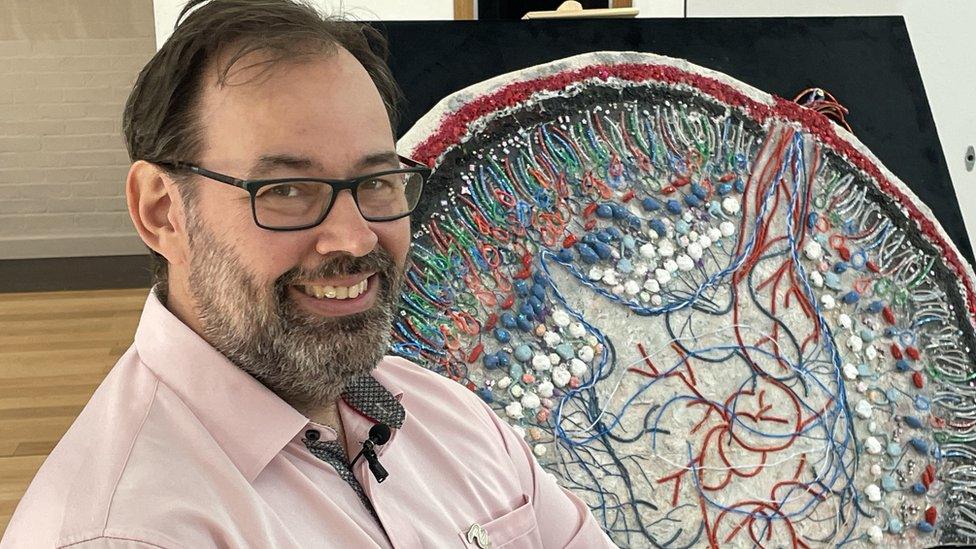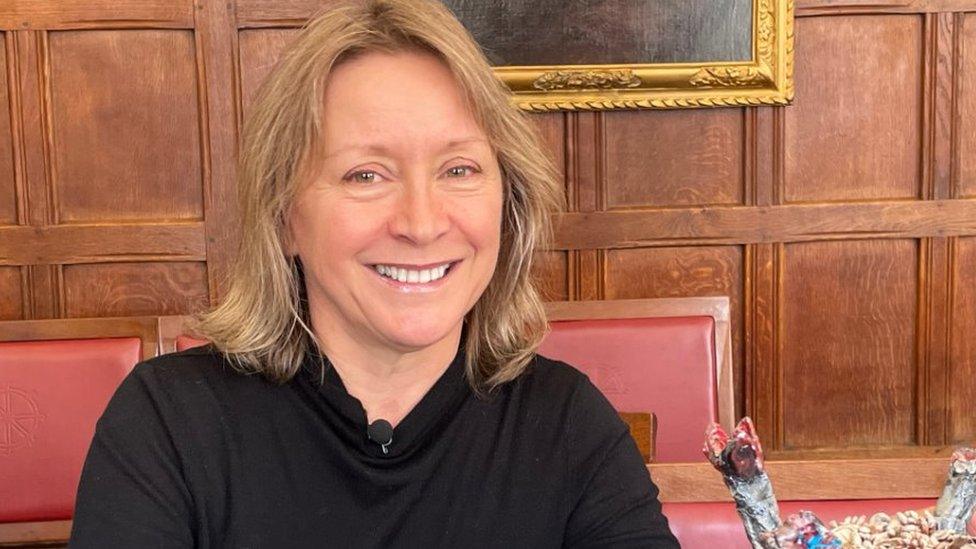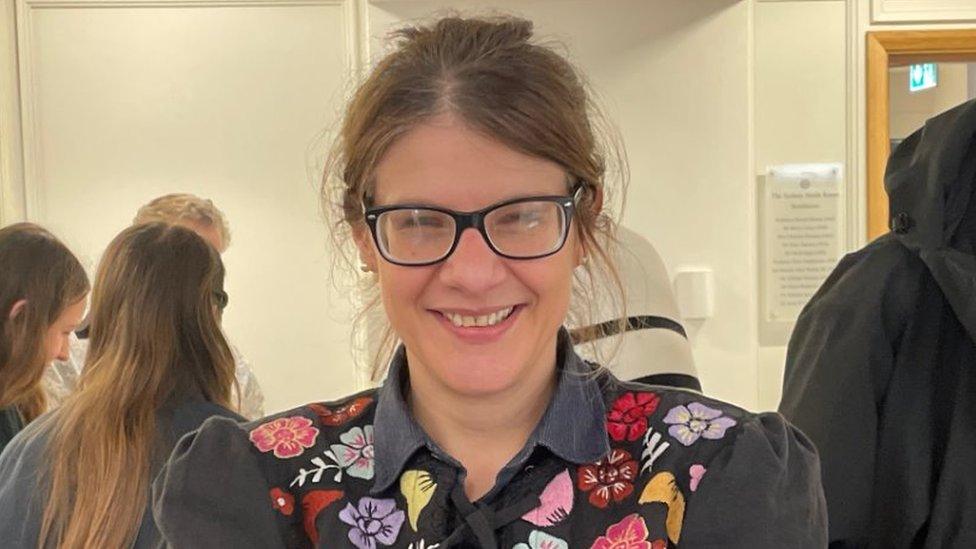Cambridge University sensory-science art for people with sight loss
- Published

Prof Adrian Liston and a tactile retina map, created by Dr Erica Tandori
Art exploring science and created for people with sight loss is on show as part of a festival organised by Cambridge University.
Sensory Science, at St Catharine's College, is part of the Cambridge Festival, external, which explores aspects of research carried out at the university and is open to the public.
Scientists at the Department of Pathology worked with local artists to create pieces to communicate science.
The festival runs until 28 March.
Sensory Science is the brainchild of Dr Erica Tandori, a low-vision artist based in Melbourne, Australia.
She was diagnosed with Stargardt disease - a form of macular dystrophy - when she was 23, and trained in creative arts and scientific communication.

Dr Erica Tandori, from Monash University in Melbourne, Australia
"I'm an artist that's absolutely in love with science," she said.
"The whole idea of making things multi-sensory brings knowledge to life and makes it more accessible to everyone."
The pieces on show include lights and music and "is about all of us - cells and the immune system - and it should be available to all of us".

A piece of art depicting HPV - the virus that can lead to cervical cancer
Together with Prof Jamie Rossjohn from Monash University in Australia, Dr Tandori saw the need for science communication to reach the blind and low-vision community.
She also worked with Prof Adrian Liston, professor of pathology at Cambridge University, who said: "The really unique aspect about this particular event is that we're really going for a multi-sensory approach.
"This involves not just the visual but auditory soundscapes, tactile maps, smell - other ways of communicating concepts.
"The aim is to make this as inclusive as possible.
"Using multiple senses is obviously a huge advantage if you want to include the blind and low-vision community."

Dr Julia Johnson worked with art and pathology students
Dr Julia Johnson, from Anglia Ruskin University, worked on the project with art and pathology students.
"We're looking at art's value in addressing some of the topics here," she said.
"We're thinking about how art can act as a communication tool for engaging audiences.
"Through a very sensory and tactile approach, young people and low-vision audiences can understand more about scientific models."

Follow East of England news on Facebook, external, Instagram, external and X, external. Got a story? Email eastofenglandnews@bbc.co.uk, external or WhatsApp 0800 169 1830
- Published12 February 2024
